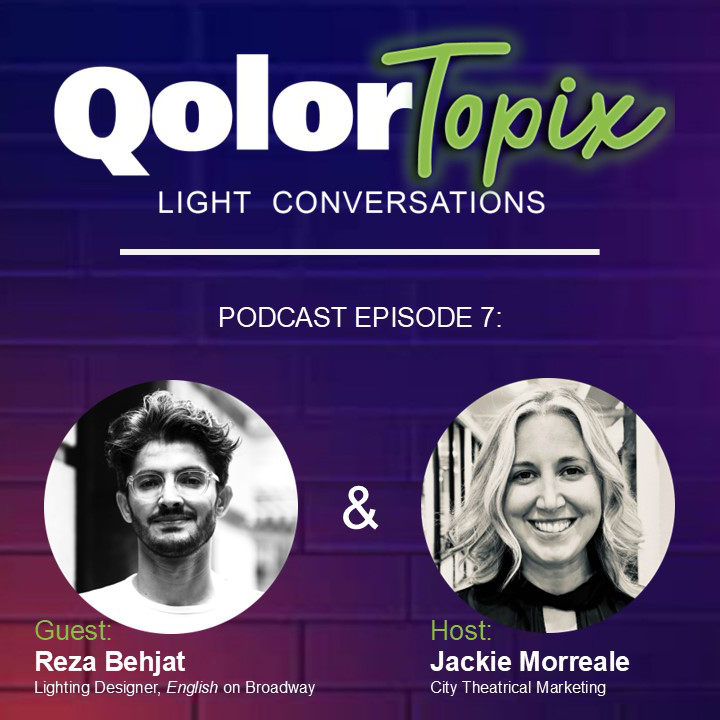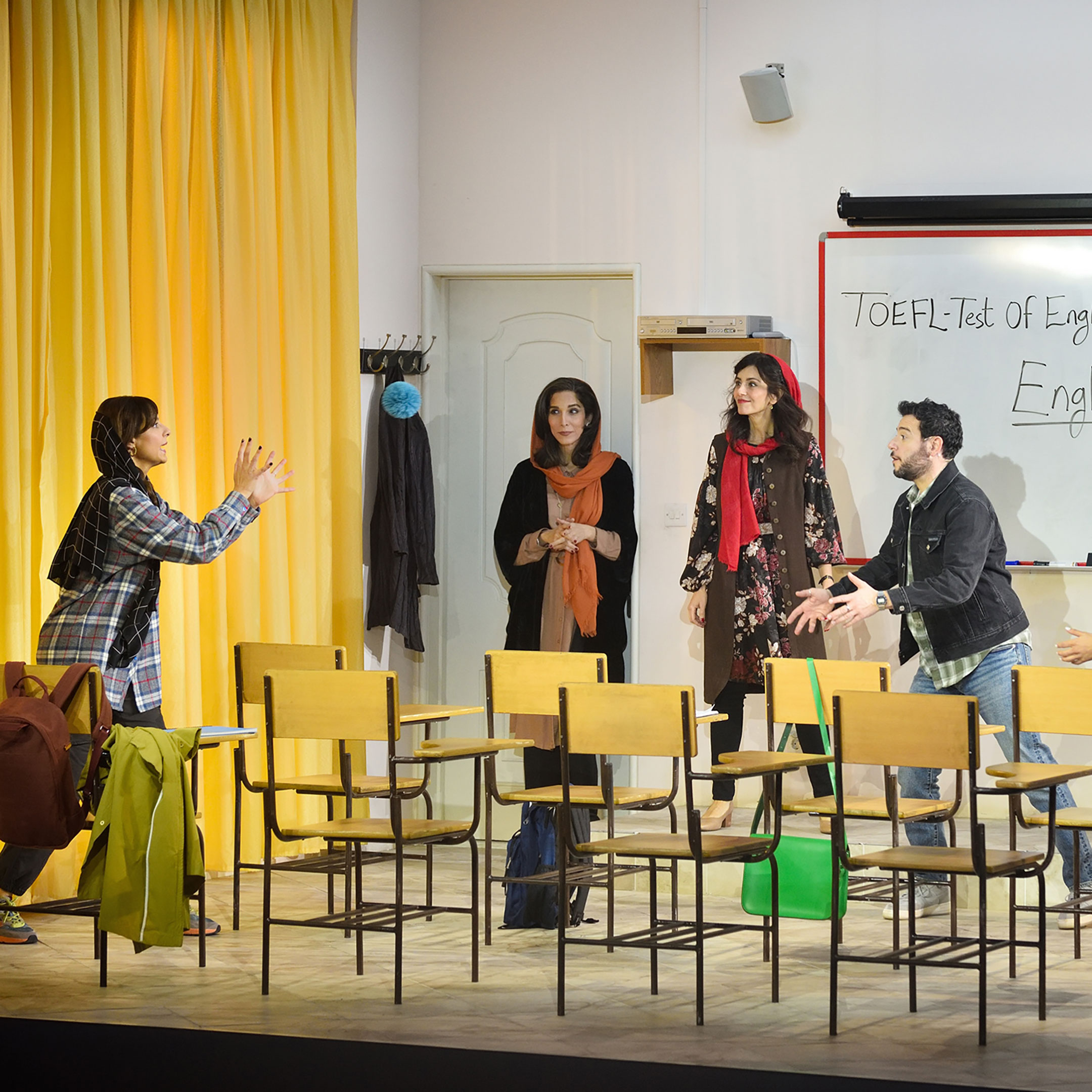QolorTOPIX Podcast Episode 7: Reza Behjat
This QolorTOPIX episode features Reza Behjat, who recently made his Broadway debut as the lighting designer for the new play English.
Listen to the podcast episode below or wherever you listen to podcasts.
QolorTOPIX Light Conversation with Reza Behjat,
Lighting Designer for the new Broadway play, English
Hello! Welcome to Episode 7 of the QolorTOPIX Light Conversations podcast series.
Published in January 2025, our seventh episode features lighting designer Reza Behjat, who recently had his Broadway debut as lighting designer for the new Pulitzer Prize winning play, English, written by Sanaz Toossi.
This episode was hosted by Jackie Morreale from the City Theatrical Marketing Team.
Other QolorTOPIX episodes include:
LISTEN NOW!
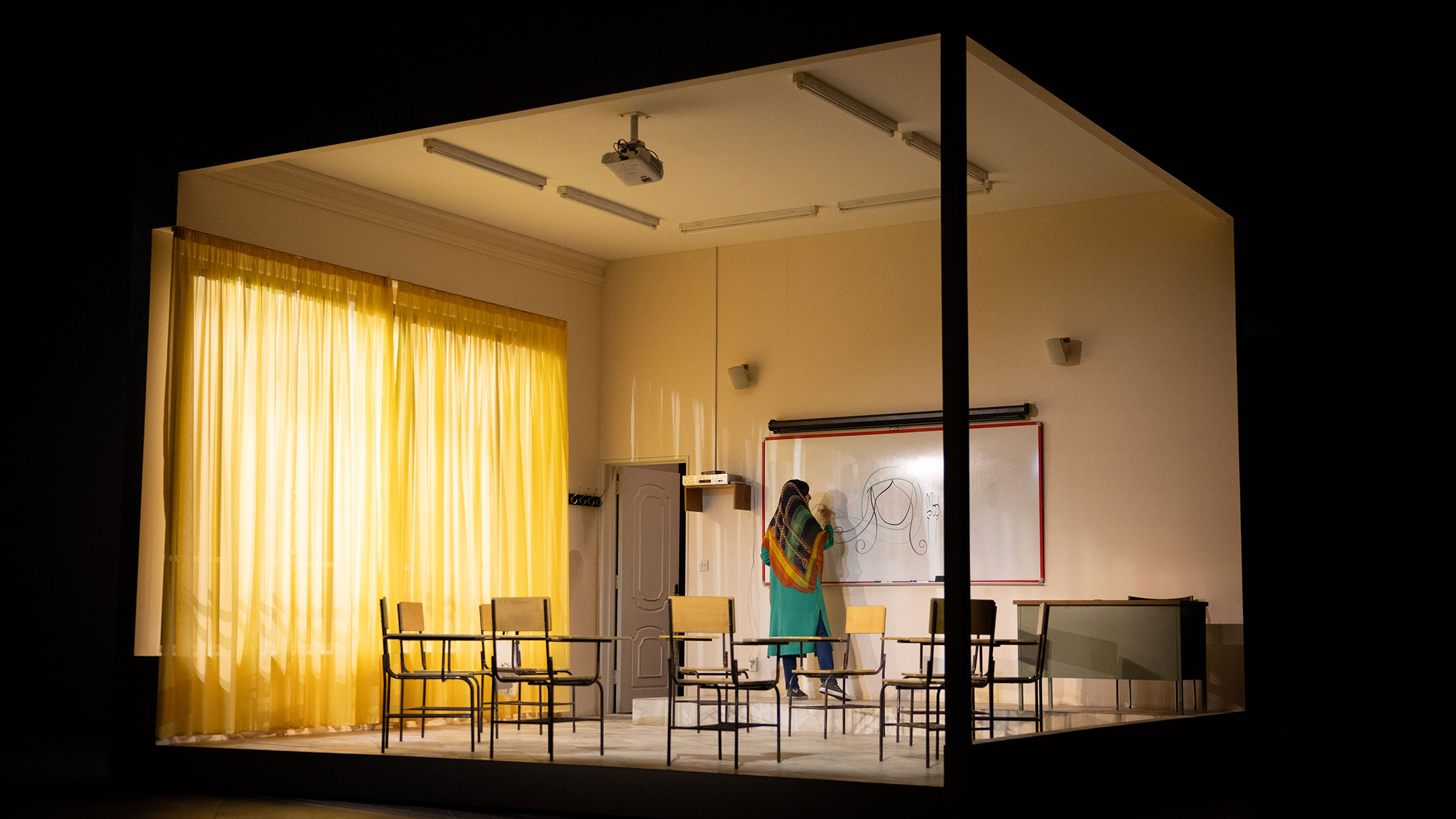
English the play on Broadway (Maria Baranova) - Day
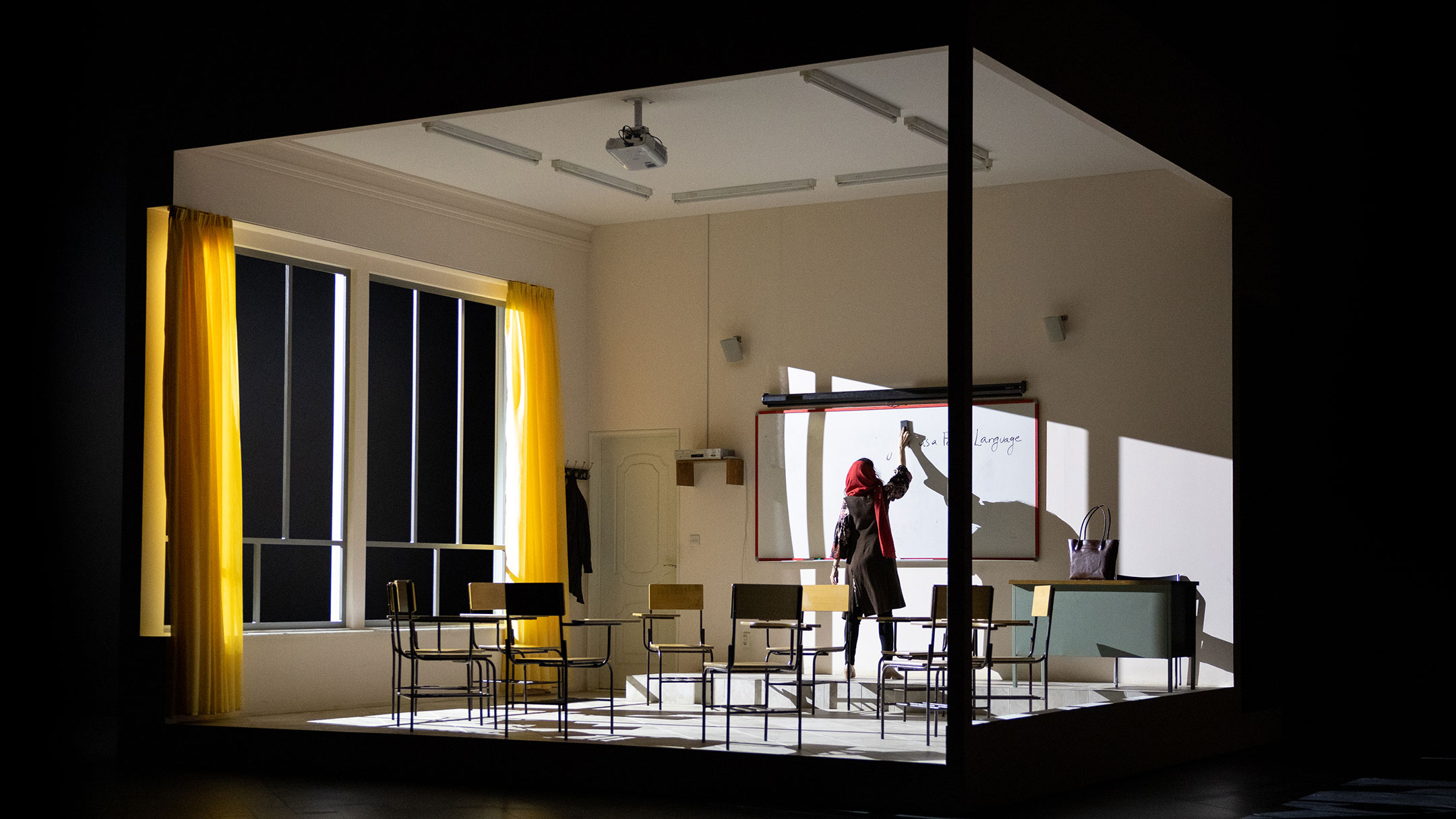
English the play on Broadway (Maria Baranova) - Night
About our Guest:
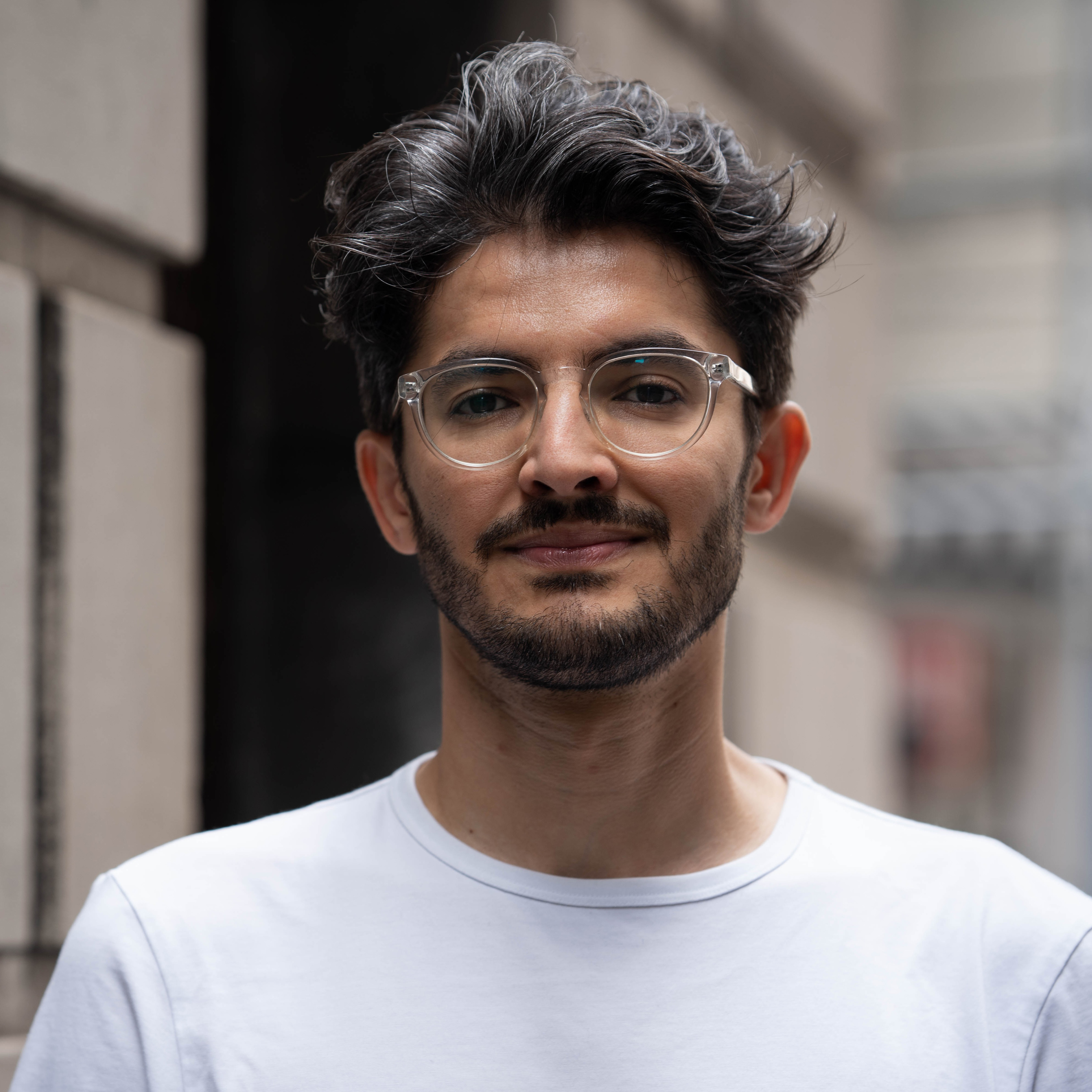
Reza Behjat
Reza Behjat is an Obie award winner lighting designer based in New York City. He began his career in Iran - where he worked with some prominent directors for several years. Reza’s works have been shown on Off-Broadway and in regional theaters across the United States such as The Public Theater, Playwrights Horizons, Atlantic Theater, Minetta Lane, Lucille Lortel, The Guthrie Theater, Actors Theater of Louisville, Berkeley Rep, Alabama Shakespeare, and many more.
Reza won an Obie Award in the design category for his work on two productions of ENGLISH and WISH YOU WERE HERE in 2023. In addition, alongside the cast and the creative team of ENGLISH, he received a Special Citation from the Obie Award. Also, he is the winner of the prestigious award of The The Knight of Illumination of Illumination for Nina Simone: Four Women in 2019.
Read more about Reza Behjat and see samples of his work at: rezabehjat.com
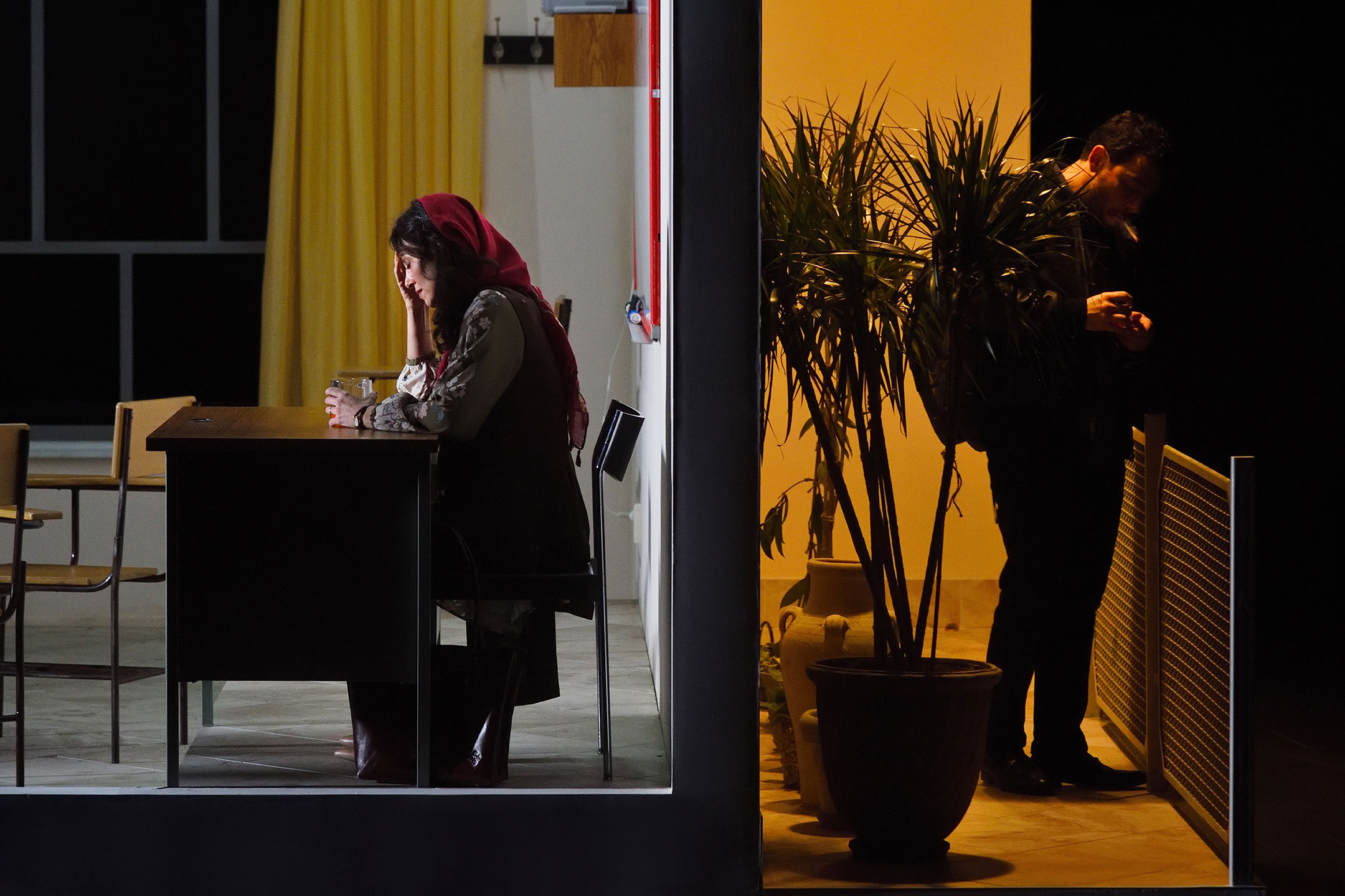
English the play on Broadway (Joan Marcus)
PODCAST TRANSCRIPT:
00:00:00 – Jackie Morreale (JM): Hello and welcome to QolorTOPIX, City Theatrical’s podcast series. My name is Jackie Morreale, and I am representing the City Theatrical marketing team. I am joined today by Reza Behjat who has recently made his Broadway debut as lighting designer for English at the Todd Hames Theater.
To start, Reza, please tell us a bit about yourself.
00:00:21 – Reza Behjat (RB): Hi, thank you so much for having me. My name is Reza Behjat. I was born in Iran, Urmia, which is a city in the northwest of Iran, where my parents still live.
But I lived in Tehran, the capital of Iran, for 7-8 years before moving to the United States.
00:00:39 – JM: Where do you currently live?
00:00:41 – RB: I live in Brooklyn. I moved here to New York in 2014 and since then New York is home.
00:00:47 – JM: How many years of experience do you have in lighting?
00:00:51 – RB: I started doing lighting back at home in Iran. I was in a directing program for my undergrad and masters in Iran.
For every show I was doing, I had to beg someone, can you please come do the lighting for me? I started just doing my show. Then people started reaching out to me. I came to the realization that being a lighting designer gives you more opportunity to work with a lot of other collaborators, and have more experience doing a variety of shows.
I slowly started opening myself up to the market as a lighting designer. People started reaching out to me more and more. I felt this is my path as an artist in theatre. That's how I started.
00:01:35 – JM: Where did you go for your Undergraduate and Masters degrees?
00:01:38 – RB: I went to NYU. That's how I came to the United States. I did an MFA at NYU from 2014 through 2017. Before that, my masters in Iran was, I think from 2006 to 2008, and undergrad was 2000 to 2004.
My last degree in Iran was at Tehran University of Art, one of the major universities for theater and film in Iran. Before that, Islamic Azad University was where I did my undergrad.
00:02:15 – JM: Are there any favorite shows or projects that you've worked on?
00:02:19 – RB: Yes, many. It's hard to pick, especially those that really stayed with you, and you feel like it resonates with you and reaches so many audience members. Before moving to the States, there were a couple of shows that I'm still really proud of. I think for a lot of people, when they see photos of that show, they remember that I did that before I moved from Iran. They still think of that show, and one of them was Woyzeck by George Büchner, the German playwright. We did it in Iran. Working in Iran is very, very different… theater is very different there. It was a very long and eventful process, but finally, we made it to the stage, and it really changed all of us. Many of us, after that show, started our careers. Other designers became very well known. Same with the director. I really enjoyed working on that show. There were some other things, but that one I think was a milestone in my career in Iran.
Then there were some other shows that I did in Iran, where we had to be very inventive. For one show I did there, we had a pool of water. An entire stage of water! I had to come up with some sort of solution. I wish we had City Theatrical in Iran to create something!
We made custom-made lights, we buried them in the water so no one could see it, that were shining through the water. It was a very fun show to work on.
Then of course, my favorite show in the United States, English. It is a show that is not only close to home to me and close to my heart but also opened so many doors for me in my career. I feel like this show will remain one of my very favorite shows.
00:04:12 – JM: Amazing. Speaking of English, the play, and speaking of learning English, the language, are there any other languages that you speak?
00:04:22 – RB: I grew up speaking three languages. I speak Turkish and Kurdish because my parents speak both languages. I grew up in in northwest Iran where it's very common for people to speak those languages, and Farsi is the official language of Iran. Those are the three languages I grew up with, and then I started learning English in high school. I picked up English before coming to the States and had to pass an English course and exam.
I'm learning Spanish. I don't know how it will go, but I'm really optimistic that one day I will be able to communicate in Spanish.
00:04:55 – JM: I'm convinced if you have four languages down pat, you can learn Spanish, or any other language you set your mind to. Do you have any hidden talents?
00:05:06 – RB: I think it's very interesting. I’m not a one-dimensional person. I always like to learn something.
I love theatre but I also do street photography. To me, it’s a different type of art from a different perspective. I think I'm an OK street photographer; I never took it on as a career, but I shot for some magazines and some photojournalists. But I feel like that is a little talent that I have there.
I'm very good with animals, I think, especially with cats. I can really get connected with cats right away.
00:05:45 – JM: Have you ever taken any photos of cats? It sounds like it would be a craze on social media.
00:05:51- RB: My cat Mercury has so many portraits.
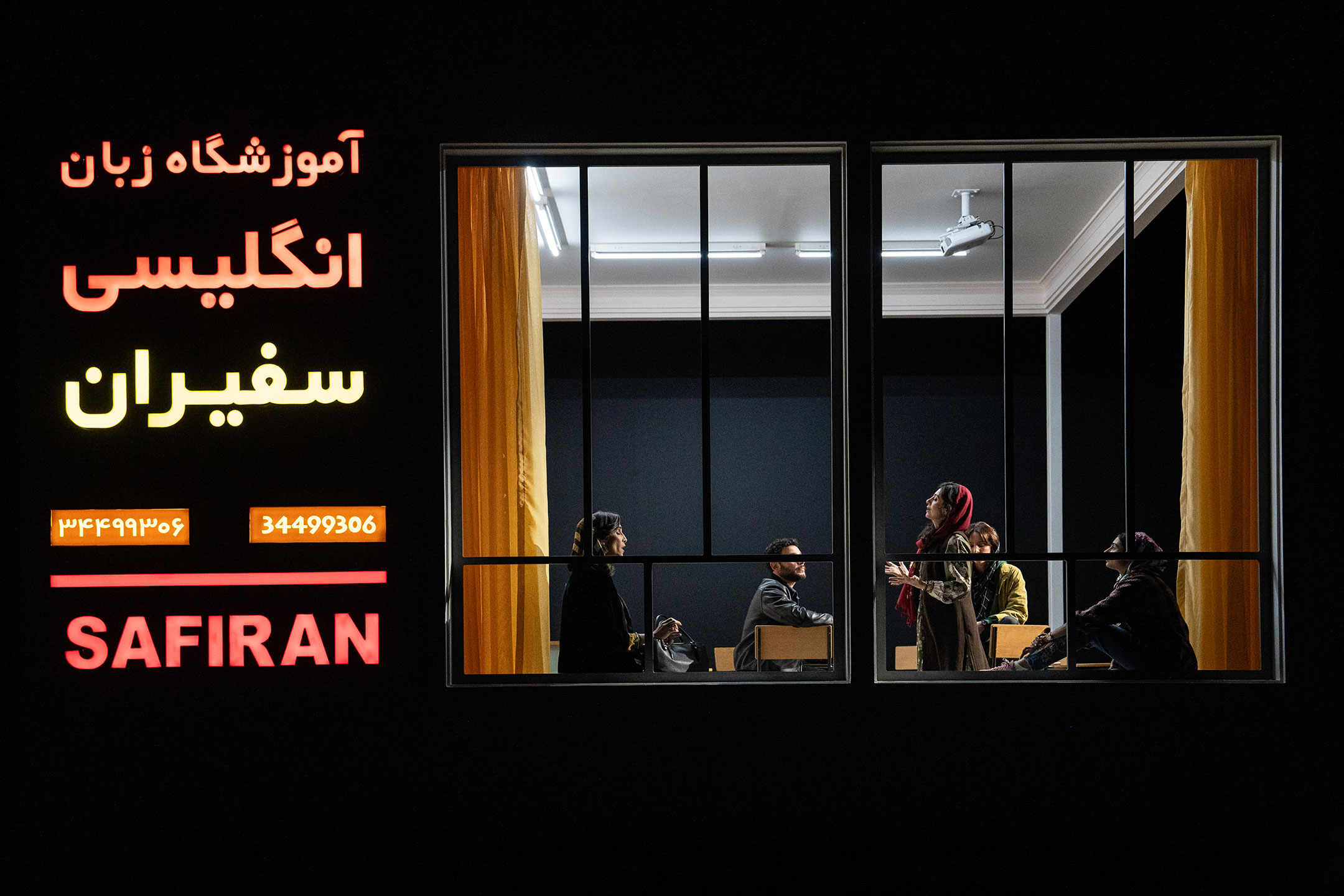
English the play on Broadway (Joan Marcus)
00:05:55 – JM: That's amazing. Are you inspired by street life in New York City, or in any other places around the world? What inspires you in your photography, and in your art?
00:06:08 – RB: 1,000%. I'm a city person. Even before moving to New York City, I was living in Tehran. It's the same vibe, the chaos that we love and the energy is there.
It really is about being inspired by the liveliness of big cities. I feel like not only just from the lighting perspective, just from a big world of so many people that they live in this big city. As a photographer or a storyteller, I want to focus on one person and try to see what they're doing. What is their history? When I feel like I'm stuck in something, and I cannot move forward, I always just go outside, pick up my camera and just walk around the block to clear my head. Maybe shoot a photograph of something. Maybe not and just walking. It really opens my mind.
00:07:04 – JM: While we're talking about street art and life in New York City, and you said you live in Brooklyn: Do you have a favorite food?
00:07:15 – RB: Favorite food. I love Mexican food a lot. I love ramen, too.
I think one of the great things about being in a city like New York is that you have access to a variety of different foods.
00:07:29 – JM: Do you have a favorite place to eat in? Is there a great restaurant in your neighborhood or close to your theater?
00:07:35 – RB: There is a German bar next to BAM. It's called Black Forest. Me and my partner go there a lot. I'm vegetarian, and they have a good option of like a veggie version of German sausage or burger. I love that spot and go there a lot.
00:07:53 – JM: Interesting. I'll have to try it. Do you have a favorite place to create?
00:08:00 – RB: Besides streets, I think my studio is the safe place for me. When I come to the studio, I'm so grateful that I can have a space that I can shut everything behind me and be in a space and think about a show. It's just a place that isolates me from the rest of the world.
00:08:23 – JM: While you're in your studio, do you have a favorite lighting tool?
00:08:28 – RB: I'm old school in the studio lighting; I want to look at something, like a color palette or a fabric sample or something. I'm a big fan of Roscoe LED swatch book. You can look at different colors or compare stuff together. That's my favorite thing in the studio.
00:08:46 – JM: Sounds like you have a very hands-on approach. Speaking of hands-on and your most recent play English, do you have a favorite scene from the play?
00:09:00 – RB: Yes, a lot of them are my favorite part of it.
I sat in one of those classes to learn English. I took a similar exam. I struggled. All of them feel very, very familiar.
One of my favorite moments in English is [the passage of time] from an office hour scene on a Friday evening into Monday morning, and to the early afternoon. The harmony of the scenery, acting, music, and lighting is so satisfying.
Every time we run it, I almost cry.
00:09:44 – JM: Aw, how incredible. If we were to dig a little deeper on your design for English, how would we describe that feeling that you get in that scene in three words?
00:09:59 – RB: Cinematic. Simple, but complicated.
00:10:05 – JM: Somehow, I understand what you mean. The play, in general, is about a group of individuals who are learning English for the first time and are taking the TOEFL exam. Is that right?
00:10:20 – RB: Yes.
00:10:21 – JM: So, this is very similar to your experience when you moved to the States and took the same exam. You can feel the words behind what the actors are saying and what they're experiencing. Did that affect your design for the show?
00:10:32 – RB: I think knowing the location the classrooms did. You would think that it's a classroom, but because I know it, there are so many private English or other language institutions in Iran. Some of them don't necessarily have a regular school architecture sort of vibe. Some of them are old houses or residential buildings that change the functionality to pass through.
What is very niche about this classroom is that you would find a piece of architecture that doesn't belong to this building, but it's there. We started this early in the process for the Off Broadway run.
Naturally, I was leading the research process because of my firsthand experience with the story. I asked many friends who were in Iran to send me more photos of their classrooms. I think that was a great starting point for the designers, to look at something a little bit different than just a typical classroom.
"One of my favorite moments in English is [the passage of time] from an office hour scene on a Friday evening into Monday morning, and to the early afternoon. The harmony of the scenery, acting, music, and lighting is so satisfying."
– Reza Behjat, Lighting Designer, English
00:11:40 – JM: It sounds like a very collaborative creative. How was it working with the scenic designer and the other designers and creative teams behind the show?
00:11:50 – RB: It has been incredible. Honestly, it's like a dream team! Shout out to Knud Adams, our director, and Marsha Ginsberg, Sinan Refik Zafar, and Enver Chakartash, our set, sound, and costume designers.
For us – me, Knud, and Marsha – we have been working very closely to each other because, SPOILER ALERT, this show has a turntable. We have almost 23-24 scenes, and the turntable moves in almost every scene. Even internally, as the scene is happening, we have something that is moving.
Both in the Off Broadway and Broadway run, and it was Marsha and I who had many, many conversations to make sure that as we're keeping the integrity of the look of each scene. Also making sure that other departments are fine, and giving space for other departments to have a moment in the storytelling, especially in the transitions.
I really enjoy that level of collaboration and perfectionism that we all share.
00:13:01- JM: Wow. I think I understand a little bit more what you mean in terms of simple but complex, when we're talking about a turntable for 23 scenes. What were some of the unique lighting challenges behind the play?
00:13:14 – RB: Absolutely. The first challenge was making sure that every light, every position, is very specific.
You cannot go beyond a certain height because there's ceiling there. You cannot be too low because it would look weird. So that was the first challenge.
The other challenge, as I mentioned, is when the turntable moves in a scene. The transitions are beautiful and fine, but it can change the look of it because this scene is not happening. Going from one different time to another time a day, or a different day. It makes sense to change the look of a scene, but when a shift is happening inside, it is very complex.
Collaboration between me, the automation team, and my programmer, Harrison Freni, on English is to figure out how we're keeping the same look and balance as the turntable is shifting. It has been a really rewarding process, but also very complex. All our queues are like so many parts, and delay what is coming in at what speed, and at what speed the turntable is starting to move. What is the acceleration? There have been so many, many layers into that. It is fascinating, but I don't think you know how complex it is, if you watch it. You feel like, oh, this turntable spins. It's OK, and the scene is still happening. But then you have to understand how difficult it is to keep that working, as the turntable moves 100 degrees.
00:15:35 – JM: Sounds like an incredible show! We all have to go run out and see it at the Todd Haines Theater. Sounds like a very specific plot and set for this. Are there any key learnings from English that you can take forward to a future project?
00:15:51- RB: Absolutely. Me, Knud, and Marsha, we are all obsessed with sodium vapor light. We feel like there's a very specific color temperature of color quality into this that you cannot replicate with a gel. I know all the great lighting companies have equivalent color to sodium vapor light. Maybe the tint is the same, but with the effect that it does on skin tone on any color, you cannot make that.
For this show, we have two incredible custom-made low pressure sodium vapor lights, to be very specific. This is because the color is very specific as many lighting people know. This arc bulb, they just pop; they don't fade the way we like it in theatre, to fade in, and fade out.
The challenge was, we don't want to abruptly bring on the light. For those like me, it's five minutes or so to warm up before you know they make a full like visibility. Shout out to a German lighting designer in the 80s who made a prototype for his show, Max Clare, that was a very famous book.
I was looking at that, and was like, we need to make something similar. Then I reached out to a friend, Kent, who is a collaborator, and he built this sodium vapor lighting for us. I think it’s one of the most gorgeous things that you see in this show.
Other learnings. When we did English Off Broadway, we only had four lights. The number of instruments now active in the show, so magically and randomly, are now between 88 to 90.
Everything is so specific in this. I only joked that OK, if I had 16 moving lights, I could have lit the entire show. When we moved to the Broadway house, the first thing that I could not use was any conventional lighting, because the turntable was moving.
Throughout the process, every day tech, every day preview. Knud wanted to move this seat two degrees back, two degrees in. But it's impossible to refocus that many lights. That's why 95% of the gear is moving light.
I learned a lot. I always worked with moving lights. Specifically for this show, though, I learned how to use a better moving light, or what I could have done better for the next project. Always learning!
I have learned a lot about a flying ladder. When you're flying the lighting, especially a moving light that is heavy and comes in, you will need a stabilizer. The one we used is called Light Lock. It’s a great accessory if you're using all this. I learned a lot about how to use them because some of them are not very quiet, and it is a very quiet show. It’s about learning how to balance all of this.
It's been a journey, but I think we did it! Today, we froze the show… today was our last tech day.
00:19:08 – JM: Congratulations! This show has won its share of awards already. Isn't that right?
00:19:14 – RB: That is right. I got an Obie award for English and Wish You Were Here. Back-to-back in the design award category. Thank you!
00:19:28 – JM: Congratulations again. English as a play itself, I believe, won the Pulitzer Prize. Is that right?
00:19:35 – RB: That's right!
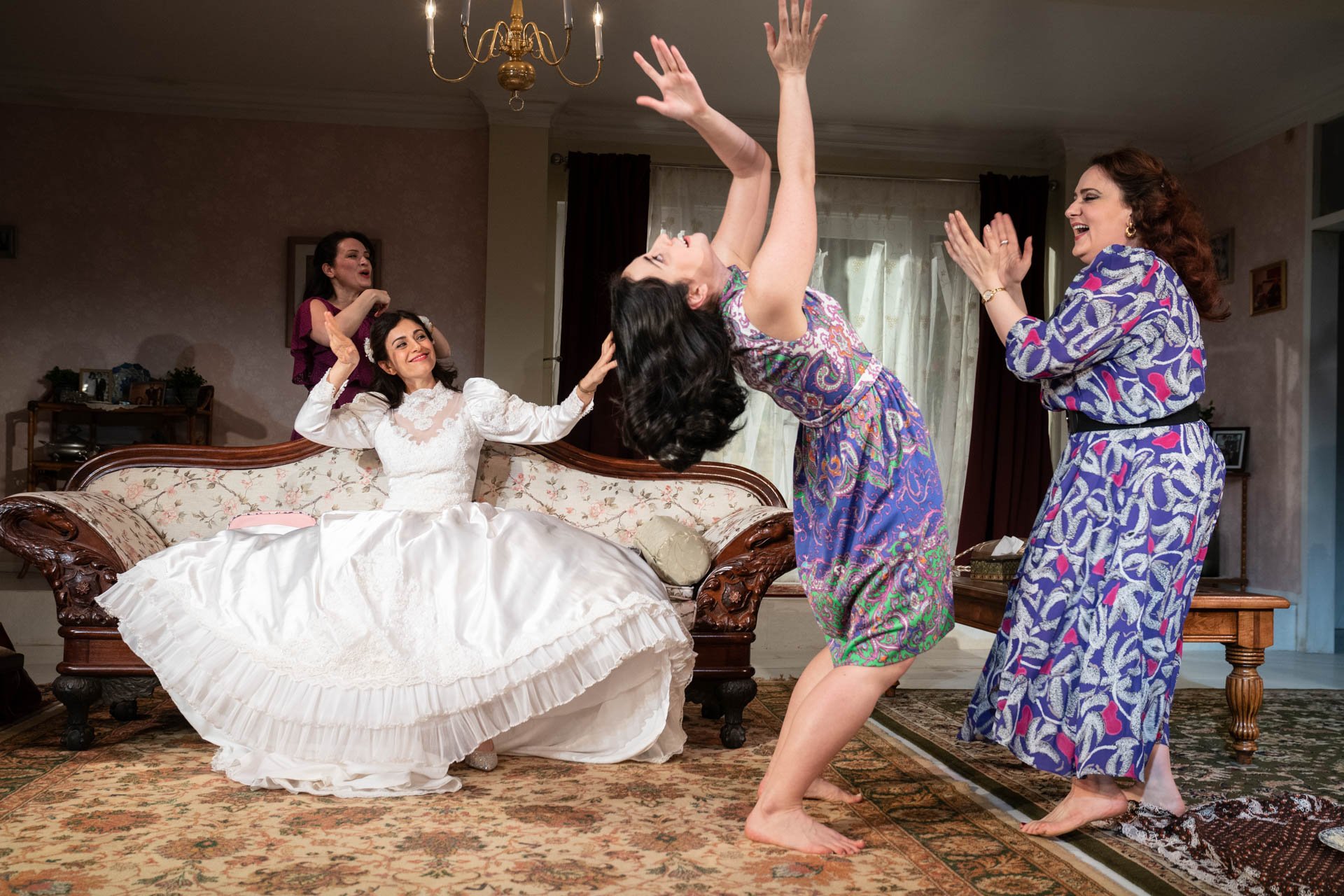
Wish You Were Here (Joan Marcus). Obie Award for Lighting Design of a play to Reza Behjat.
00:19:36 – JM: Amazing. What is the best part of your job?
00:19:42 – RB: As a lighting designer, you always bring something to the table that changes everything; the perception of space, color, mood. All of that.
Everything starts with lighting. It starts to bring out paint with light or add some depth or flatten it out. Lighting can change the perception of everything.
When I work with people for the first time, I tell them that ‘lighting designer’ is the second thing I do. I really want to be part of a collaborative process. Count on me as a collaborator because I believe in shared creativity. It doesn't have to come from the set designer or other designer. Someone at some point can bring something to the table, and it can change the concept.
00:20:32 – JM: It seems like you have a very big picture view. Very collaborative and you have a level of understanding for your projects that gives you a unique design and skillset that you can apply. I completely understand why you've already received several Obie awards and have made your Broadway debut, and I expect many shows to come, and I look forward to hearing more about those!
00:20:57 – RB: Thank you. You're so kind.
00:20:59 – JM: Absolutely! Let's talk about the tech because that's what we're into at City Theatrical. In general, do you have any challenges of tech that you're facing on a day-to-day basis that you would like to see solved with some good new gear in the future?
00:21:17 – RB: Technology is moving so fast and so many amazing companies are working on solving issues. I think something that sometimes we're still facing, would be with LED technology. I use LED all the time because I think the amount of work and potential that an LED source can give us is so big. I always go for that, but I understand why some other generations are hesitant in using LED more. I think color is one of the things, especially in moving lights, in which you really need to work hard to get a very specific color.
English is not a colorful show. The range goes between color temperature from 1,800K to 7,000K, but we spend long, long hours just picking something that is appropriate for the scene. It also can’t look weird on an actor or on set.
Color is something that I look forward to more innovation and improvement along the way.
00:22:33 – JM: LED all the way for the future, and better control over color and dimming curve. Sounds like it's the kind of technology that you're looking for.
00:22:41- RB: Exactly. And wireless you know, now we do a lot of wireless DMX technology. City Theatrical is a pioneer in that.
I always think about you have one candle and this you know, for whatever reason, we are not allowed to have open flames, especially in the United States theater scene. How to control something very small so that you can fit everything in a tiny container. I always look for the tiniest wireless control that you can find on the market.
00:23:20 – JM: What was your experience like using City Theatrical beam control accessories, like our top hats, or hardware like Safer Sidearms™?
00:23:20 – RB: They're always lifesaver. You put a top hat in front of a light, and it changes everything. I'm always a big fan, especially smaller ones, like those you can put on 50° or 36° if it doesn't cut out too much of the light but still gives you that clean look of the fixture.
Of course, Safer Sidearms, especially for moving lights. All the time, you need to have a very secure position. I'm always a big fan of it, even when I'm using Wash units.
You know the City Theatrical Hexcel Louvers or Half Top Hats for MAC Auras? I always ask for them in the plot. They make such a big difference.
00:24:12 – JM: I'm so happy to hear you say that! So glad you like our beam control and hardware, and it's doing its job and it's helping you create the experience and design you're going for.
"I’m curious how much technology can improve to create something that we look at and say, is ai on stage, or is a lighting designer behind it? They have technology that can create a show with some gears overhead. I'm curious about the future of lighting for entertainment and how it will change in the next 10 years."
– Reza Behjat, Lighting Designer, English
00:24:20 – JM: What do you see for the future of lighting?
00:24:28 – RB: I think every artist out there, is publicly or privately asking the question: ‘Is ai going to take my job at some point?’ It's one of the things I think about. I'm sure there's a level of procession, and that probably ai technology is not there to execute it in the lighting world. But when it comes to design, you can get inspired by image generating tools and look at things.
That's part of the things I think about - I'm curious and I'm interested in ai, not against it. I’m curious how much that technology can improve to create something that we look at and say, oh, is ai on stage? Or is a lighting designer behind it? They have technology that can create a show with some gears overhead. I'm curious about the future of lighting for entertainment and how it will change in the next, I don't know, 10 years, or something like that.
The other thing that you know is that we see a lot of film technology improving every day. When I see the behind the set, films and movies you see that oh, they're not doing anything. Everything is just post-production.
What I'm really interested in seeing is how lighting can change the live storytelling that we are not cheating here, creating everything live in front of an audience, versus a film production, in which everything can be fixed in post.
So that's exciting how much we can be perfect in live storytelling.
00:26:10 – JM: I agree and love that you have both the film and the live theatre experience, with both lighting and directorial work. You're really thinking about this in 360-degrees. I look forward to seeing what happens in the future!
00:26:27 – RB: I agree. Very exciting.
00:26:28 – JM: Very exciting. While we're talking about the future, any future projects?
00:26:33 – RB: I have a couple of projects that are coming up very soon, right after English.
I'm very excited about all of them, but one of them I'm really looking forward to, is Eurydice at the Signature Theater by Sarah Ruhl, who is the arrival of the original production. I wasn't in the stage when it happened, so it's really interesting. I've worked with the show’s director Les Waters, and some of the collaborators in that show. I'm looking forward to being in that room.
Another show that we are remounting next week, I’ve done it twice. It's called Still, it’s a play. It’s going up at the Sheen Center. I’m really looking forward to it.
00:27:13 – JM: Are there any folks out there that you want to shout out? Perhaps mentors, anybody who has helped along the way?
00:27:21 – RB: 100%. I'm grateful for my mentors at New York University, ML Geiger, Allen Lee Hughes, and Robert Wierzel. Those were my three mentors in grad school. I've learned so much from them. I'm always grateful for their support. Even now that I've graduated like seven years ago, we're still like friends. They’re always checking in, making sure that I'm doing good even before we started this Broadway show. They’re all very kind, supportive, and generous. They offer help and support, however they could, to help me to be as prepared as possible for the process.
Then there are the other theatre collaborators. It is always fun when you work with people you know, right? Because you already understand each other. Talk to each other. Know how to work with each other. But I'm excited to work with new people because building that trust takes time. I'm always grateful when someone says OK, let’s do this. Let's trust each other's vision and create something together. When that initial spark happens between two people to build that trust. It makes me very excited.
00:28:40 – JM: Well, Reza, thank you so much for being with us today. We are so excited about your work on English. We can’t wait to see. Thank you for sharing all the details and some of the inspiration behind your work.
00:28:52 – RB: Thank you so much for giving this platform for early career designers on Broadway. I always appreciate that, and I always read those emails, on who is coming up and what new technology is coming up from City Theatrical. So, thank you for you.
00:29:07 – JM: Thank you for listening, we appreciate it! Have a wonderful day and thank you so much for your time.
00:29:13 – RB: Thank you.
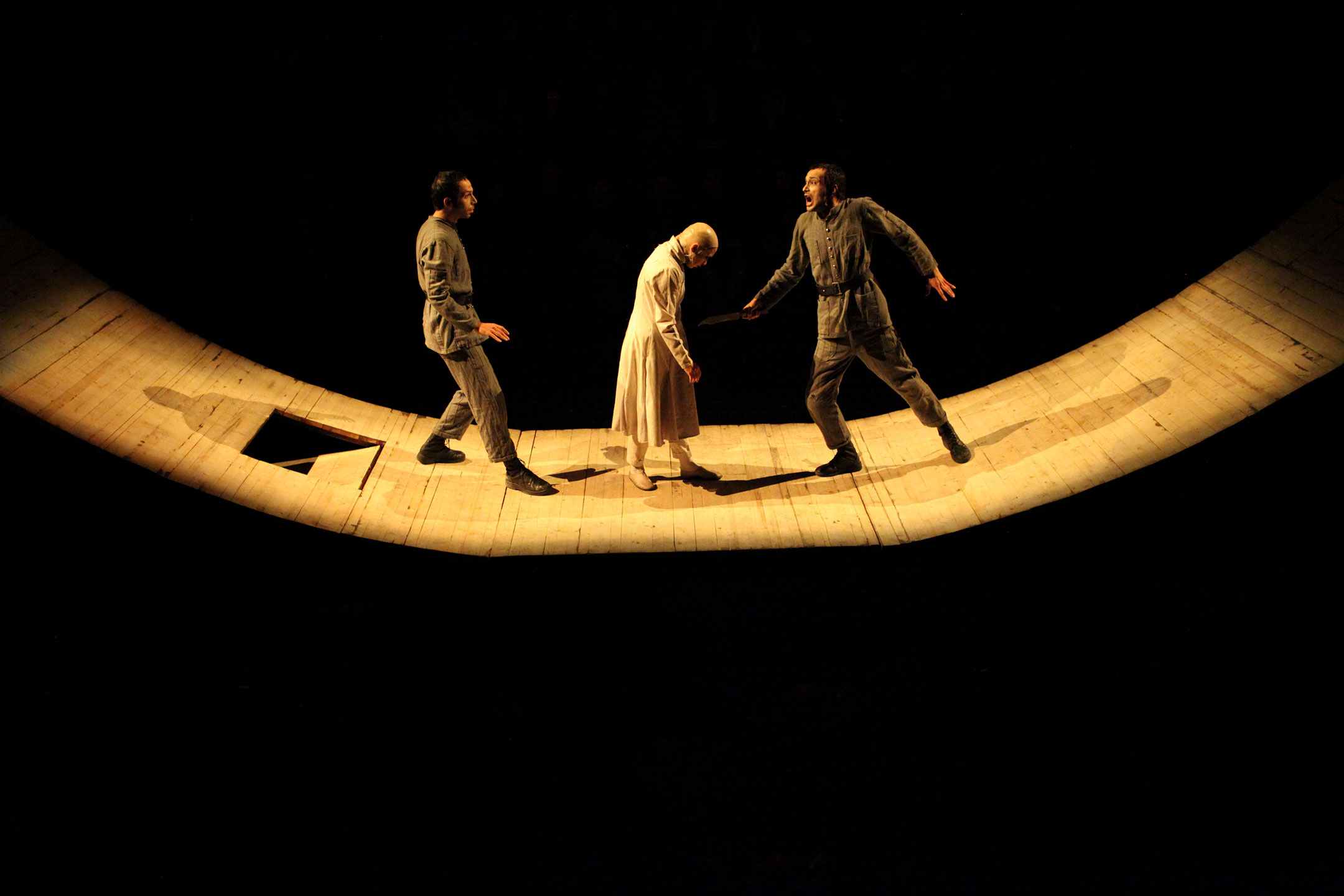
WOYZECK (Ava Kiaie).
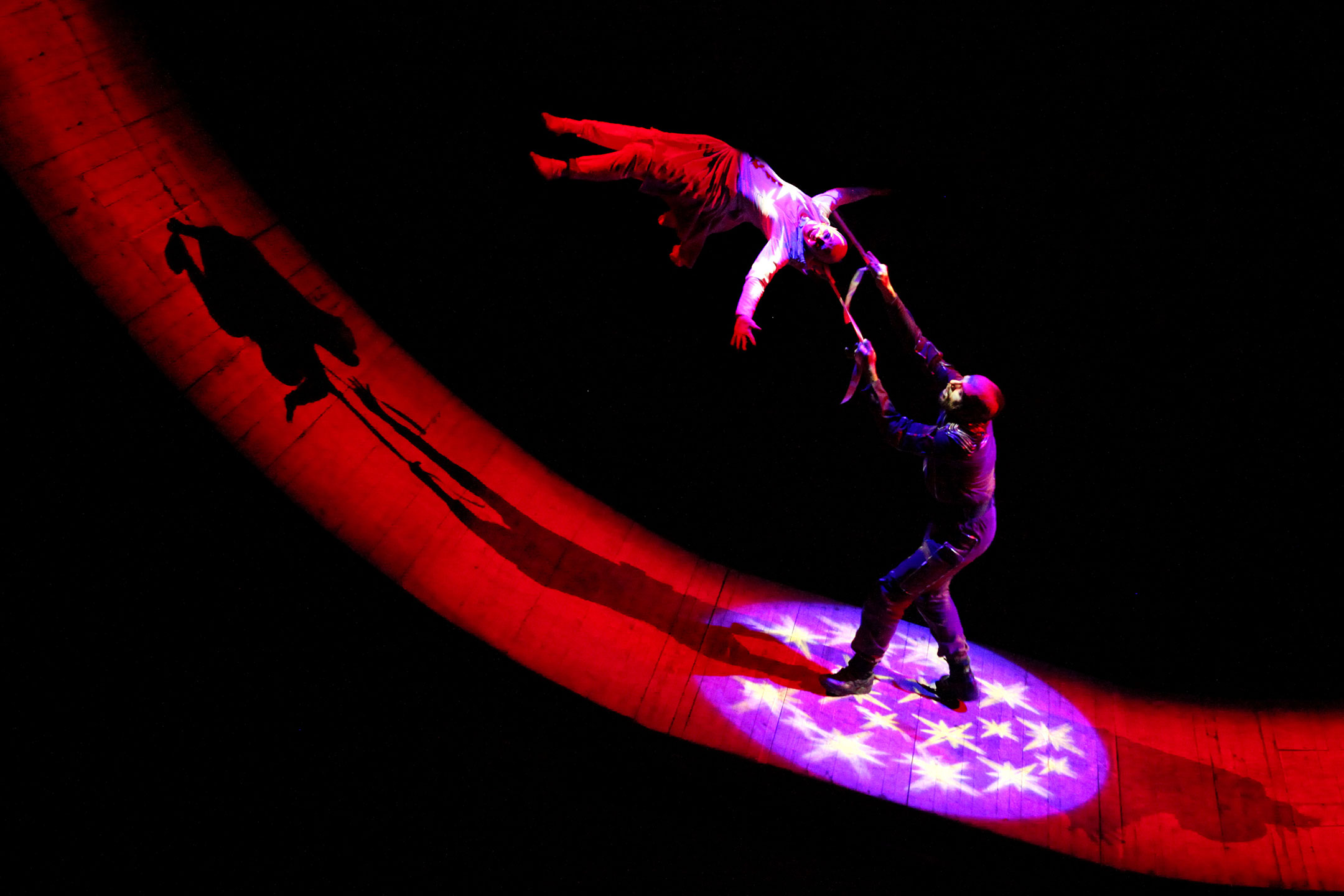
WOYZECK (Ava Kiaie).
Read more about Reza Behjat, and the new Broadway play, English:
Explore the City Theatrical QolorTOPIX Podcast Series
Listen to this and other light conversations on our podcast page or wherever you get podcasts.
Listen Now
